Return to GFtbox hints and tips
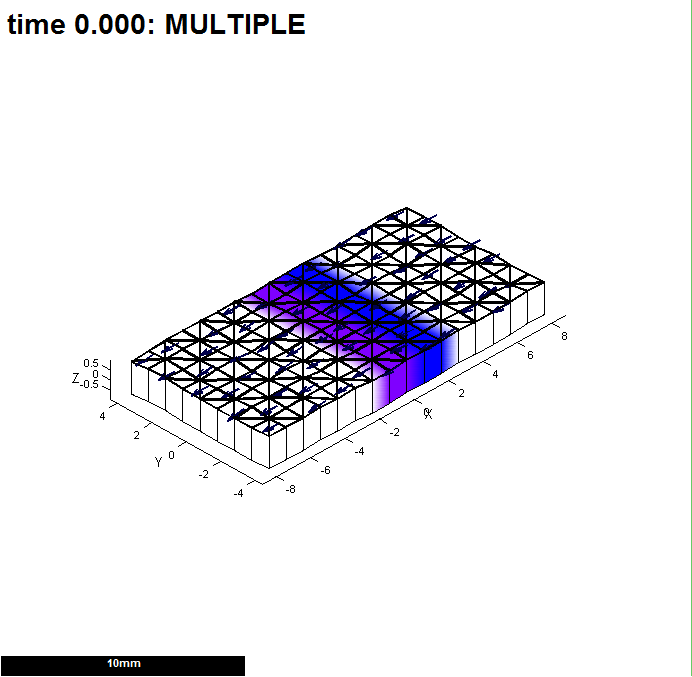 Simple mesh of 382 elements equally spaced vertices. Superimposed are the polarity arrows (pointing bottom left) and purple and blue factors that control local growth rates. Simple mesh of 382 elements equally spaced vertices. Superimposed are the polarity arrows (pointing bottom left) and purple and blue factors that control local growth rates.
|
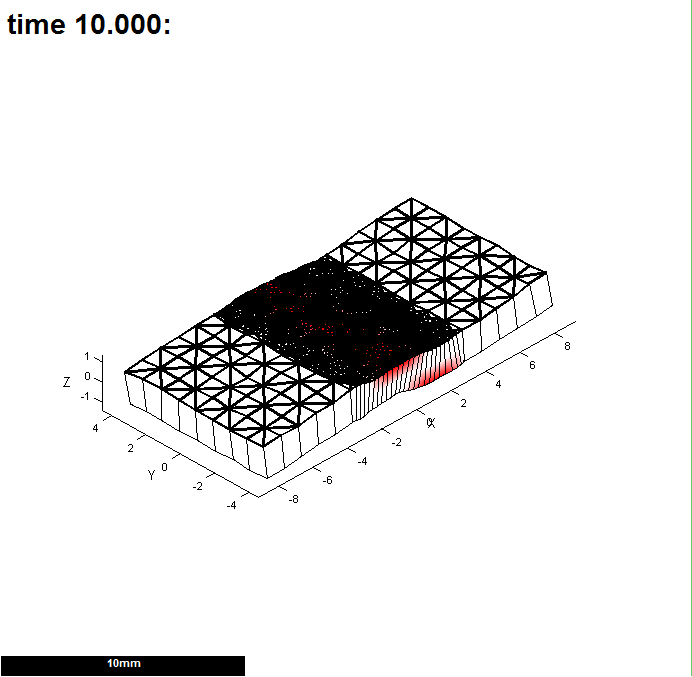 After one step in which the central region is subdivided twice (the vertices are too dense to see). After one step in which the central region is subdivided twice (the vertices are too dense to see).
|
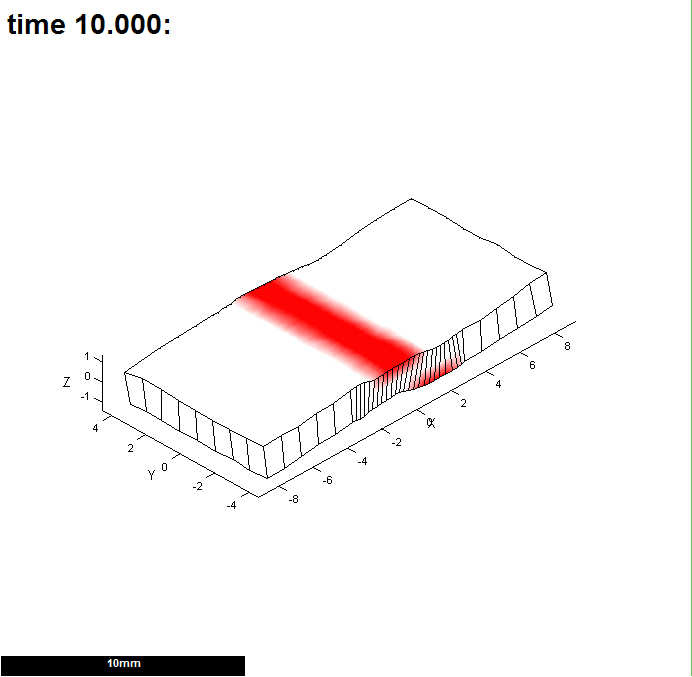 As for the previous example but the size of the triangles forming the mesh is only visible along the edge. Red marks regions of increased growth on the top and bottom surfaces. As for the previous example but the size of the triangles forming the mesh is only visible along the edge. Red marks regions of increased growth on the top and bottom surfaces.
|
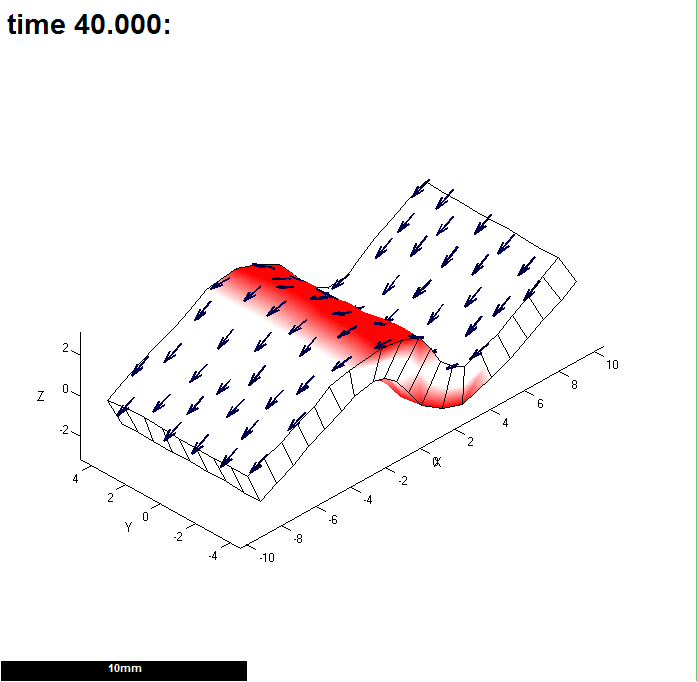 After growing for 40 steps the excess growth has bent the canvas into an 'S' shape. Note the smooth bend is associated with about 4 elements. After growing for 40 steps the excess growth has bent the canvas into an 'S' shape. Note the smooth bend is associated with about 4 elements.
|
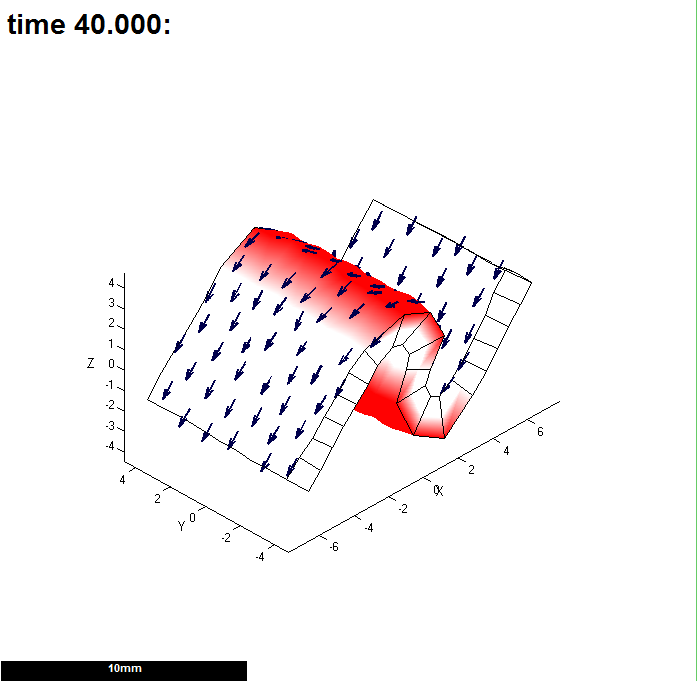 As for the previous example, but there has been no subdivision and the curves are unacceptably incomplete and jagged. There should always be enough elements to permit curves to develop smoothly. As for the previous example, but there has been no subdivision and the curves are unacceptably incomplete and jagged. There should always be enough elements to permit curves to develop smoothly.
|
Interaction function illustrating operations on the mesh
Run the project (example project )for 40 steps to see the effect of:
- subdivision
Then change the modelname to 'NOSUBDIVISION', i.e. make a change to the interaction function
% Set up names for variant models. Useful for running multiple models on a cluster.
m.userdata.ranges.modelname.range = { 'NOSUBDIVISION', 'WITHSUBDIVISION' }; % CLUSTER
m.userdata.ranges.modelname.index = 2; % CLUSTER
by setting index to 1. With too few elements, bends are jagged.




